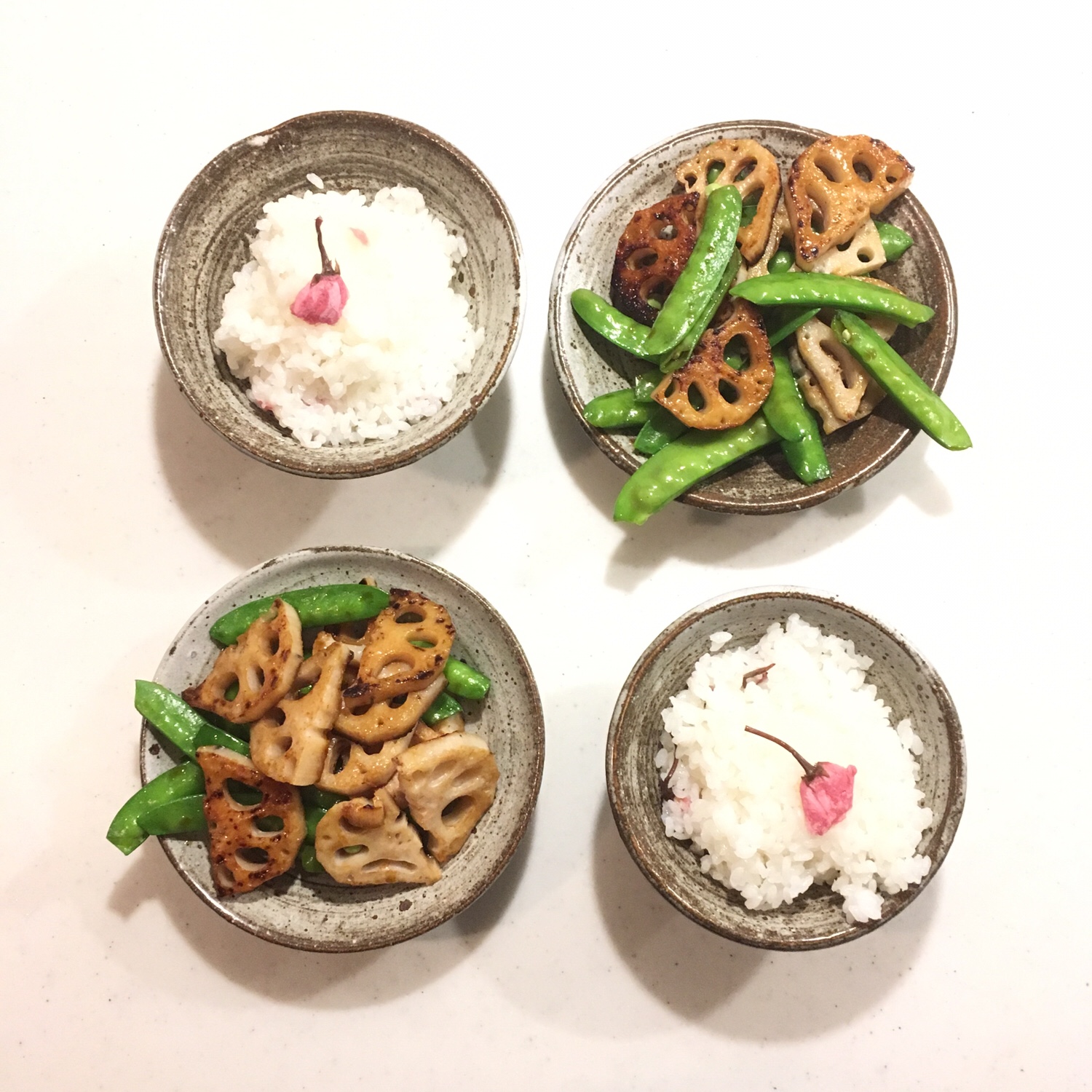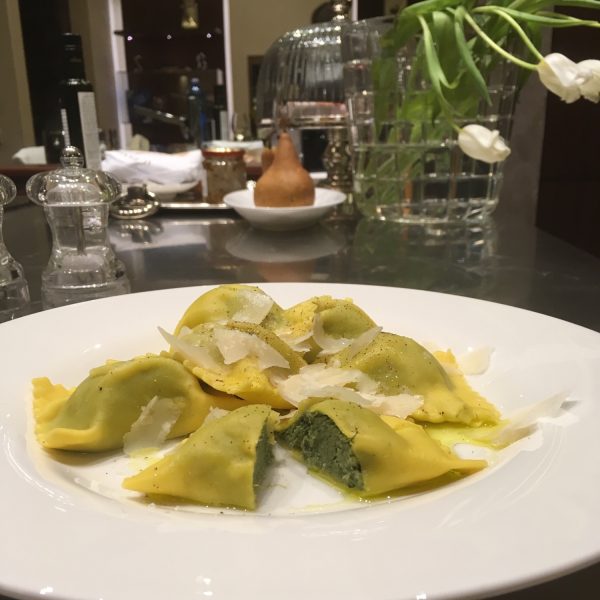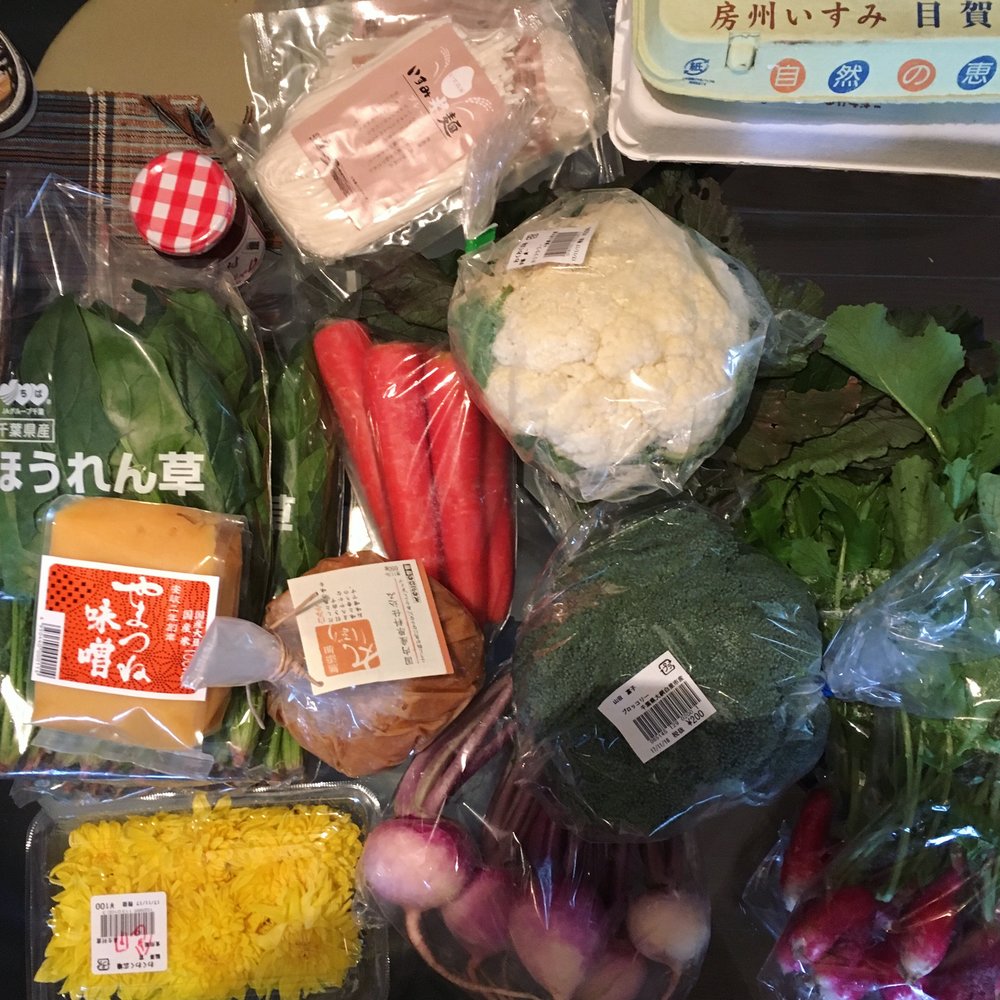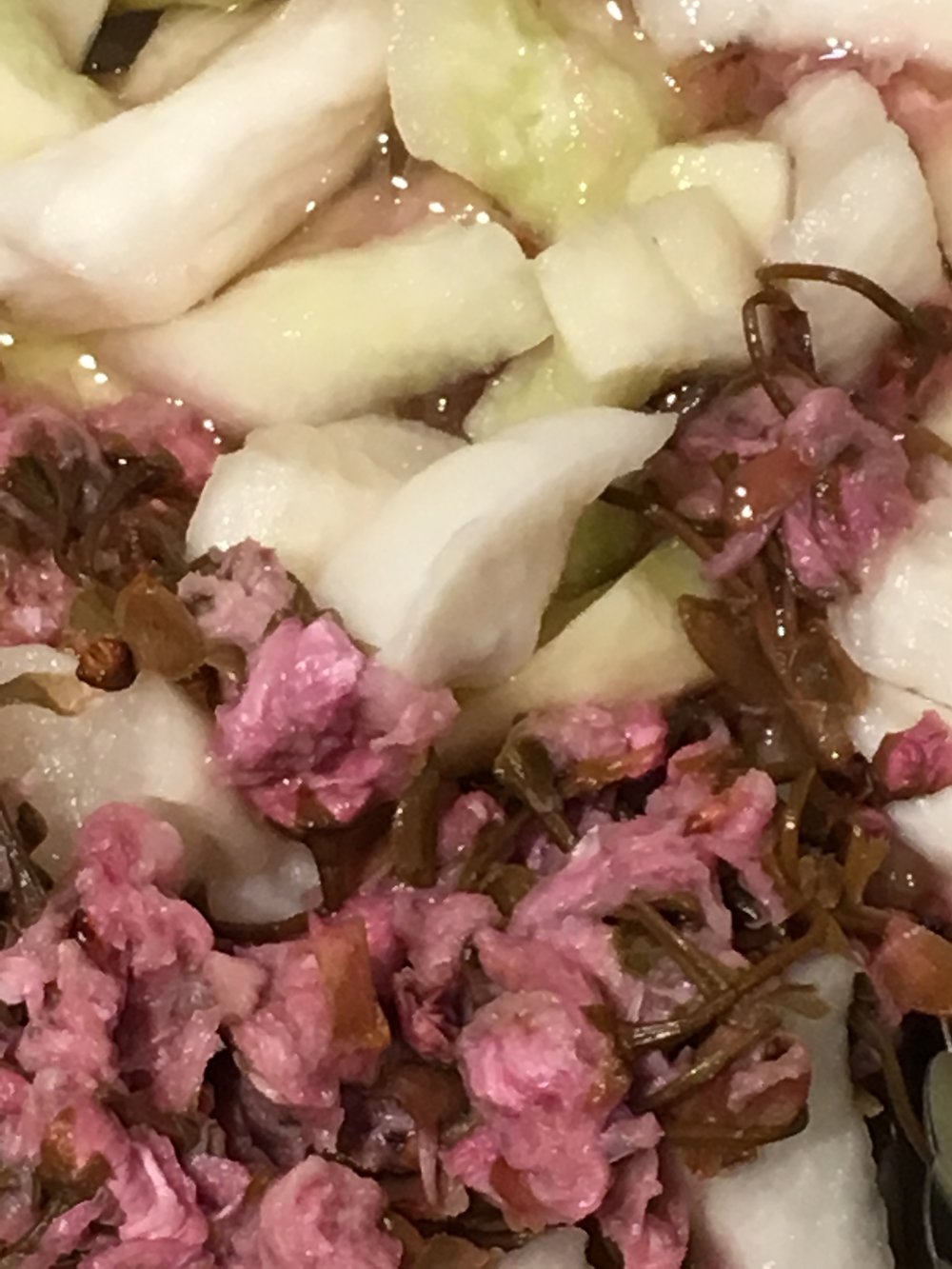In the summer 2012 when we bought our house in Isumi I never imagined how much it would be a life changer. At first it was purely a fancy project to have a Japanese house and a garden, a place to do little DIY projects (since there’s nothing we can do in a rented apartment in Tokyo) and interior design… but these 6 years have provided us with a lot of opportunities for thinking about our life style, what we care for, and we want. But all that I’ll write about later. One thing, among a few others, I really got into is making bread (why and how is there). Handmade bread. Hand kneading is such a quiet and nice moment to talk and think after a busy day in the garden, at the seaside or on the tennis court. At first I was just trying to make bread and brioche with regular flour I could find in the supermarkets but I wasn’t happy with non organic flours, then started to bring back organic ingredients from our trips to France: fancy flours, dry sourdough, dry yeast, seeds and cereals. But this solution was not sustainable since my travels to Europe are irregular, that most of the organic products are usually contaminated with pests and they don’t suffer the Japanese climate to well in particular our house temperature variations and humidity variations are quite dramatic. From 2deg to 28deg and from 10% humidity to 90%. I’ve started back then to keep them in the vegetable drawer of my fridge, which is exclusively used for that now. You can keep them very long and without any pest and they don’t loose their taste. But little by little I learned about the locally produced flours and organic flours have started to appear on shelves here and there. Hokkaido is a very nice wheat producer and they have high quality flours. Cuoca offers a great variety of products when you make bread and a variety of Hokkaido flours (they also have French). I personally don’t shop online, I’d rather go to the shop in Mitsukoshi Nihonbashi where I can buy also fresh yeast and choose the flours I like on the spot. But one other great source for finding flours is when traveling around Japan. If you travel a bit in the countryside you’ll discover that many other regions than Hokkaido produce wheat, but likely at a lower scale, and are only sold locally at farmers cooperatives. Try “michi no eki” 道の駅 and JA fresh products markets, they are always a great place to find local food and locally produced rice, beans, and flours… I remember buying amazing black wheat flour near Shiojiri in Nagano prefecture and some super fine white flour in Nasu in Ibaraki prefecture. Options for making bread locally makes me feel better, they are more fit to the Japanese climate and I don’t have to carry kilos of flours anymore with me on my long haul flights! I still carry other staples that I can’t easily find in Japan… recently it’s been semolina, dry fruits, olives, olive oil, but that, it’s another story!
Spring savory delights
Nothing to do with the recipe I am presenting today, but the other night we went to check the newly opened Tokyo midtown Hibiya. A new building with many shops, a large Toho cinema and a terrace garden with a view on Hibiya park and the imperial palace. The place just opened so it was very crowded in apparence but the overall place was quiet and walking around was smooth and nice. Shops are for the most the same as elsewhere. Brand names, big and small, chains. Nothing really to impressive. The only thing that I found fun and interesting was the retro corner on the 3rd floor, with some craft, a barber, a book store and some sculptural clothes.
There is one trend tough that I find quite interesting. 15 years ago when we arrived in Tokyo there a few cinemas, mainly old, that little by little were closing down, until it was a real pain to find one. Recently many of the new shopping places downtown have a large dedicated cinema. Toho cinemas are really spreading and now it is really easy to find a screening in original version too. Yet movies release is still super delayed compared to other countries and we usually watch the “new” movies on the international itunes store before they are available in Japanese theaters!!! And what to eat with a good movie? Pasta or a good and simple Japanese vegan meal with rice and sautéed vegetables. To celebrate spring I really like snap peas, for the crunchy texture, the little tart and sweet taste, and the brillant green. And I also love the salted sakura flowers with rice in particular, but not only ( I made some sable last weekend and it was great!). And since I still have some lotus root (I bought a giant one!) I cooked the all thing to be served together. Sautéed in a little of oil for the lotus root, then add a little of water to steam the snap peas on top, finish with soys sauce. For the sakura, I wash the salt in water and add them to the cooked and hot rice. Serve all and eat happily while watching a movie!!
Kitte
When we first arrived in Japan there was a huge post office close to Tokyo station. Quite convenient at the time for tourists because post offices where the only places or so where you could withdraw cash from an ATM with a foreign credit card. But the building didn’t resist the whole tide of renewals in the Marunouchi area, the construction of the Shin Marunouchi building, the opening of brick town and the revamping of the station. Opened since 2013, Kitte (which means “post stamp” in Japanese) is the shopping mall in that very former post office in front of Tokyo Station (Marunouchi south). They basically kept the facade and some of the inside such as the old postmaster office. Otherwise it is a shopping mall like many others, with a flair for Japanese brands and local products. I’ve been visiting it a few times and I find it nice to stroll in because it is usually little crowded. There are two places I like there:
北麓草水 Hokuroku souui, a brand that sells mainly soaps and body soaps and a few cosmetics and skin cares made in Japan with simple ingredients. They have two main fragrances for their body soaps and most of their products, so it’s quite limited but it’s just enough because both smell super delicious: hinoki and yuzu. I find hinoki perfect for every situations, it is both stimulating and soothing at the same time. It smells our first trips to Japan, when we were bringing back charcoal soaps with hinoki fragrance as souvenir. It smells a long time ago!!!

Intermediatheque is the other place worth seeing at Kitte. It is a giant “cabinet de curiosities”, a museum (linked to the University of Tokyo museum) with free access that is worth the detour and spending 30 to 90min in or even more. There are many inspiring things on display of various biology, anthropology, physics, engineering… the organization is such that it gives the impression to wander in the attic of a museum with all these treasures kept secret. Yet a very sleek one!! The top pictures was taken there, but no spoilers, go and check out yourself!
Fresh pasta
You know how much we love fresh pasta and more than any stuffed pasta. While in Florence this time I didn’t have much free time to cook, traveling here and there (Pisa, Paris…) for work so we tried a few places where to buy some fresh pasta and so far in central Florence the best we’ve had were the spinach and ricotta ravioli from mercato centrale’s Raimondo Mendolia stand. You can eat there or buy the ravioli raw and cook them yourself at home. That’s what we always do. Because We have tried a few ravioli in different restaurants, they are always good, but what I love with bringing them back home is that I simply boil them and serve them with olive oil, salt and pepper and grated Parmigiano for me nothing else. The reason why we love these ravioli more than any it’s because they are large with a lot of filling. And, the filling has plenty of spinach which taste is really remarkable. Contrarily to many stuffed ravioli which stuffing is to dense and heavy (use of too much potato or starch or flour), this one is light. So if you’re in Florence and looked for stuffed pasta, head to mercato centrale!!!
Shopping spree!
With our new work schedule, we finish work quite late on Friday evening and leaving for the country at 23:00, in the cold evening, empty stomachs and drained from the week is not too tempting, so we prefer to wake early on Saturday morning and leave quickly. In the winter fewer people go surfing and golfing that early so it’s not jammed. It is great to drive by day to enjoy the scenery, and we also can stop on the way at local shops we usually don’t go too often. Saturday we stopped at Wakuwaku in Otaki, a shop selling a lot of local products and fresh veggies and fruits, as well as some fish and local pork. Actually we haven’t been for the whole summer, and since we last went they had a total refurbishment and new branding with more organic products too. And it was just crazy! On top of the regular fresh fruits and vegetables I regularly buy, I also bought different types of miso, dry fish, block ham, sausages and locally made rice pasta. They also had tones of preparations such as small fish or shrimp cooked in soya sauce, with walnuts… pickles, tofu… and they had a lottery where I won an other bag full of dried sweet potatoes, rice crackers…


The thing I was the most tempted to try right away was the rice pasta from Isumi. I decided to cook them in a wok of vegetables, with chrysanthemum and sausages. So I boiled and drained the pasta, and kept in cold water. In a wok slightly greased I added 4 little sausages chopped, one red carrot cut in rectangles, a handful of brocoli, a handful of cherry tomatoes, and the petals of two yellow chrysanthemum flowers. Once the sausage were ready, I added one table spoon of soya sauce, then added the drained pasta and stirred well. Served immediately with an other chrysanthemum flower for decor. Simple and delicious!
Have a great week!
Mitsukoshi Nihonbashi – 三越日本橋
I often go to shop at Mitsukoshi Nihonbashi because it is the closest department store from our place and it offers some really amazing services that I hve never found somewhere else: an excellent antic jewelry repair corner, a fur reform service, a nice shoe repair center, a huge corner for patisserie and bread making, with organic flours, fresh yeast… and of course, some Italian products and European products. I don’t use often the fresh products corner, but they have some nice fishes and vegetables. And only once in a while I shop there for prepared food. When we have visitors from Europe and we don’t want to eat out, but I am too busy with work to prepare a proper Japanese dinner, I like to go shopping there. First for the gyoza… the shiso and seaweed gyoza are just super delicious. They have a beautiful choice of seasonal food with pickles, tofu, crackers, and sweets. Going there with your foreign visitors you can be sure they will enjoy it and be amazed. The fact also that you can taste many of the products is really perfect. And during weekdays it is not even crowded. They often have exhibitions of Japanese craft related to fashion in the big lobby. This time, with my parents that freshly arrived in town, I knew that Mitsukoshi would be a great place to go for a walk, in particular on a rainy day. They love gyoza and it is almost a tradition now that the day they arrive in Tokyo we have gyoza for dinner at home. But this time we bought much more than just gyoza!!!! Sakura daikon pickles, rice crackers, yuzu mochi… A real shopping spree! All more delicious than the other!
Mitsukoshi Nihonbashi – 三越日本橋 :
Canola with miso
It is nice to change shopping place once in a while because different markets have different products and it opens up to new opportunity for trying new recipes or new combinations. So this weekend instead of shopping in Ohara I shopped in Kuniyoshi, a small village 10km away. I love their coop shop because they have many different products in particular for fish and meat. So I got a beautiful sashimi of sabre fish and prepared it very simply with white rice, canola boiled in dashi and served with miso (one classic use of canola in Japanese cuisine), and I pan fried some tiny lotus roots and the fish. That’s it!
Canola with miso – 味噌和え菜の花
– 1 bundle of canola
– 1 small handful of katsuobushi
– 1 tbsp of miso of your choice
Wash quickly the canola under running water, remove the hardest parts if any. In a pan boil 1/3L of water, add the katsuobushi in a dashi bag. Bring to a boil. Add the canola and cook for 5min. Drain and rince with cold water. Squeeze them gently to remove all the water. Cut in 3 or 4 the whole bundle. Serve woth miso on top. (You can also mix the miso with it but it might break the leaves and flowers, so I prefer not to)
Coconut oil curry
I am not too much in food trends and I am not too keen in trying new fashionable products. I see them on the shelves of super market: hemp, egoma… but never or rarely buy any. Three months ago when our friends from Germany visited us and we went food shopping for organic rice and Japanese products for them to bring back home, they convinced me that coconut oil was nice, and before that I read that it has many virtues so I bought some. And then I kept it in the fridge since then. Open it once or twice, but the smell rebutted me and I continued cooking with olive oil as usual. Last night I decided it was time to try. So I come up with a recipe where I could as well have used a little coconut milk: a spicy vegetables mix to serve with grilled snapper and black quinoa. I used 1 onion, 1 potato, 1 capsicum, 1eggplant and 1yellow zucchini all cut in bites. In a big pan I heated one large teaspoon of coconut oil and added the vegetables: onion first then potato, eggplant, then the rest a little while after. And cooked under cover. I added 1tsp of curry powder a little of cumin powder, a tsp of anise seeds and a very little of nutmeg powder. Added 10cl of water and stir. Cooked an additional 5 minutes without cover. The curry is ready!
In the meantime I prepared the black quinoa and grilled the fish. Prepared the plates and served immediately.
Then what about the coconut oil? The smell is quite strong and the taste persistent in the food, which for my preparation was perfect but it can be slightly repelling in some dishes or may be one needs to get used to it. It is vey nice for golden brown veggies, I obtained a very beautiful color and texture. So yes it’s nice, but for me it is going to take a little more brain to find recipes where to use it. Any suggestion to start with?

Isumi pork  → Isumi ham
→ Isumi ham
The city of Isumi has a special pork meat called Isumi pork (いすみ豚), what is special about it I can’t really say now but it is for sure delicious, very tender and juicy. But since they grow pork in the area, we were thinking it’s really a pity they don’t make ham (it’s really hard to find good ham in Japan in particular in supermarket in Ohara), until our friend S. visited us yesterday and arrived with some fresh ham, from Isumi!!! Super nice ham!!! So we decided to go and check out the place where to get some, a small meat shop near the railway and Ohara station. They have smoked ham and pepper ham. We tried both and both are amazing! Apparently the pork farm is apparently in Otaki. We will probably go and check what they have soon. In the mean time, we are really happy to have found some really nice ham and had some for breakfast with eggs and buckwheat crepes!!







